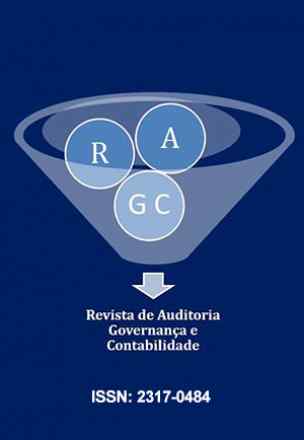Análise Tributária no Regime Simples Nacional com as Alterações Propostas pela Lei Complementar 155/2016
Revista de Auditoria, Governança e Contabilidade - RAGC
Análise Tributária no Regime Simples Nacional com as Alterações Propostas pela Lei Complementar 155/2016
Autor Correspondente: Jhennifer Poliana Bianchessi Boufleuer | [email protected]
Palavras-chave: Simples Nacional, Impacto Tributário, Planejamento Tributário.
Resumos Cadastrados
Resumo Português:
O Brasil tem uma alta carga tributária, sendo que as micro e pequenas empresas comprometem anualmente cerca de 41,80% de seus rendimentos tributários para manter suas atividades no acompanhamento da legislação, destinando 153 dias ou o equivalente a cinco meses de suas atividades para pagamento de tributos. Salienta-se ainda que estas representam mais de 60% das organizações brasileiras. Este estudo tem como objetivo verificar qual o impacto na carga tributária das micro e pequenas empresas que estão no regime simples nacional com as futuras alterações na fórmula de cálculo. A metodologia utilizada caracterizase como pesquisa aplicada, estudo de caso e bibliográfica, quali-quantitativo, exploratória e tem como base as alterações na lei complementar nº 155 de 2016. Os resultados demonstram que houve a manutenção da carga tributária nas atividades de comércio, indústria e prestação de serviços do anexo III e IV. No entanto, as atividades que possuem despesas com folha de pagamento maiores que 28% em relação ao seu faturamento, que atualmente são tributadas pelos anexos V e VI tiveram uma diminuição da carga tributária. Por fim, como ponto positivo, a implantação da alíquota efetiva corrigiu os impactos das mudanças de faixas de tributação. Ponto negativo não houve correção dos valores por índices de inflação, apenas ajustando o número de faixas. A principal contribuição está na importância de demonstrar ao empresário as análises a respeito dos impactos nos novos cálculos do simples nacional.
Resumo Inglês:
Brazil has a high tax burden and micro and small enterprises annually commit about 41.80% of their tax revenues to maintain their activities in monitoring legislation, allocating 153 days or equivalent to five months of its activities to pay taxes. It should be noted that these represent more than 60% of Brazilian organizations. This study aims to verify the impact on the tax burden of micro and small enterprises that are in the national simplified tax system with future changes in the calculation formula. The methodology used is characterized as applied research, case study and bibliographic, qualitative and quantitative, exploratory and based on the changes in complementary law No. 155 of 2016. The results show that the tax burden was maintained in the activities of commerce, industry and provision of services in Annex III and IV. However, activities that have payroll expenses greater than 28% in relation to their billing, which are currently taxed by Annexes V and VI, had a reduction in the tax burden. Finally, as a positive point the implementation of the effective tax rate corrected the impacts of changes in taxation bands. Negative point was no correction of the values by inflation indexes, only adjusting the number of bands. The main contribution is in the importance of demonstrating to the businessman the analyzes concerning the impacts on the new calculations of the national simplified tax system.

